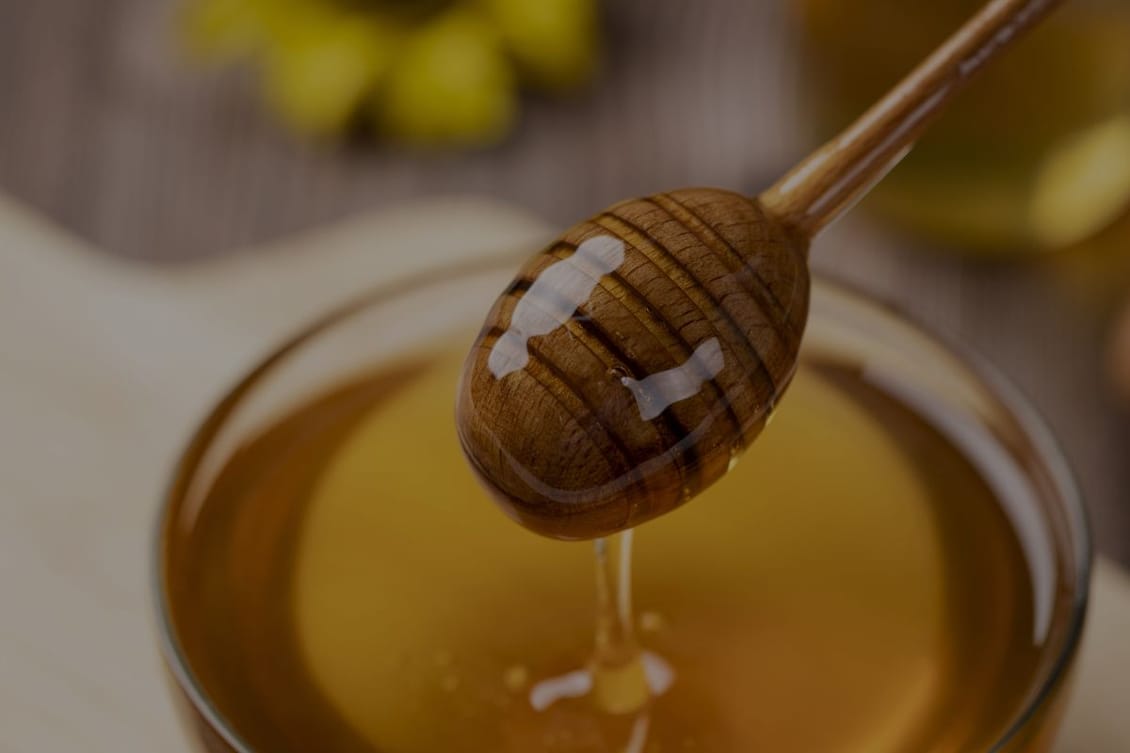
As honeybees joyfully flit from one flowering plant to the next, they collect nectar through their specially formed tongue (the proboscis) into an organ (the honey stomach), to take back to their hives. They then pass their collected nectar to house bees in the hive who deposit it into those recognisable hexagonal combs.
After using their wings to fan the honey to the right water consistency, the bees use a wax seal to preserve the honeycomb, ready for consumption.
Little do these honeybees know that all their hard work equates to less than a gram – not even a teaspoon – of honey in each bee’s week lifetime of five to seven weeks.
Although honeybees have a short lifespan, they play a pivotal role in agriculture, fruit growing and horticulture as they cross-pollinate crops while they dutifully collect nectar. In recent decades, there have been fears that bee populations are falling – and this triggered a growth in beekeeping (also known as apiculture). Even David Beckham has nine flow hives.
But honey has been around for thousands of years before we started spooning and squeezing it onto our porridge and pancakes.
Stone Age paintings depict ancient communities using honey to treat injuries and illnesses. And we’re still doing that now – around the world, honey is widely recognised for its health-supportive properties; used to treat everything from coughs and colds to eye disease and eczema.
According to the UN’s Food and Agriculture Organisation (FAO), in 2021 there were over 100 million bee colonies – a 47% increase since 1990.
And it’s a good thing that bee colonies are on the rise, because demand for the sweet stuff is also growing. In 2022, the global honey market was valued at USD $8.53 billion, and is predicted to rise to over USD $14 billion by 2031.
Our relationship with honey has become more complex in recent years. People want more of it – but they also want to understand where their food comes from, how its production and harvest affects the environment around it, and how the animals and humans involved in making it were treated.
Although it’s honeybees who make honey, it’s also honeybees who need that supply as their own food source. This is particularly important during colder months, to enable them to continue their important pollinating work.
So food techs like California-based MeliBio set about creating bee-free honey. It’s produced through synthetic biological processes, fermentation and plant science to make a product that looks and tastes like bee-made honey. And surprisingly, MeliBio has the same health benefits of traditional honey, without harming honey bees' homes or their livelihood.
Darko Mandich (CEO at MeliBio) said in an interview with Green Queen, “By bringing delicious, nutritious, and real honey made without bees to the market, we are shaping our present and future in a way that is better for bees and for humans.”
Consumers are more concerned than ever about where their food comes from, and its impact their purchases have on our planet. But with the demand for honey increasing, alongside environmental factors like global warming affecting supply, there are steps the industry can take to produce bee-made honey in more sustainable and ethical way:
A study conducted by researchers at the University of Turin, Italy, looked into the driving forces behind honey buying trends. They found that 66% of surveyed consumers eat honey for its health benefits, in particular:
That same study found that the older people get, the more inclined they are to want to consume honey for its health benefits. But they also want to find the sweet spot between getting these benefits while making ethical and sustainable choices.
It’s also been noted that organic certifications and traceability had a positive impact on the customer’s interest in buying honey.
And there are, of course, national and regional differences in honey preferences and consumption. China is the largest honey producing country; but one study analysing consumers' willingness to pay for honey in China found that 62% of people only bought honey once a year, sometimes less and when it was purchased, for health and medicine reasons. And 45% of those who took part in the study purchased honey directly from beekeepers, knowing its origin from the hive to their home.
The honey market is set to grow – and this ancient food product is set to remain a part of our lives.
Novel trends like ‘hot honey’ (mixing honey with chilli to build a new flavour profile) and using honey as a natural sweetener in confectionery are driving small shifts in the market.
And as the demand for natural food products across segments continues to grow, we’re likely to see developments in production and supply chain strategies in the honey segment, to protect supply and protect the bees.
In particular, we expect to see emerging technologies integrated into honey production around the world. The boom of the Internet of Things and advancements in AI and machine learning models are opening up new, more efficient ways to produce honey; for example, using sensors to monitor and maintain optimal hive conditions for bee colonies.
And simplifying the extraction process using automation technologies could help to drive down costs to consumers – while maintaining quality and traceability.
The short of it? Honey will continue to create a buzz.
Take your seat at the InFlavour table, a government-backed and world-leading B2B food event by Tahaluf.
E-mail address SubmitWant to keep up to date with all our latest news and information? Enter your name below to be added to our mailing list.
E-mail address Submit